exploring animal iconography from around the world, ancient to modern https://linktr.ee/arthistoryanimalia
Don't wanna be here? Send us removal request.
Text
#Caturday 🐱:

Enni Id (Finland, 1904-1992)
Kissat (Cats), 1976
Oil painting, 60x75 cm
#animals in art#20th century art#european art#painting#cat#cats#tuxedo cat#Caturday#Enni Id#women artists#Finnish art#Scandinavian art#folk art#naïve art#1970s#trio#oil painting#self taught
20 notes
·
View notes
Text
#FishFriday 🐟:


“Ceramic bottles modeled and painted in the form of #parrotfish. Moche style, Peru.” [Moche culture c.100-800CE]
On display at AMNH [B/3663, 41.2/7779]
🆔 The 2nd vessel with the bump on the head likely represents the appropriately named Bumphead Parrotfish (Scarus perrico)!
#animals in art#museum visit#AMNH#Fish Friday#Parrotfish#species ID#Bumphead Parrotfish#fish#ceramics#pottery#animal effigy#effigy vessel#bottle#Moche art#Peruvian art#Andean art#South American art#Indigenous art
91 notes
·
View notes
Text
Resharing for #NationalPetDay
#BookRecommendations for #NationalPetDay :

Artists and Their Cats

Medieval Pets
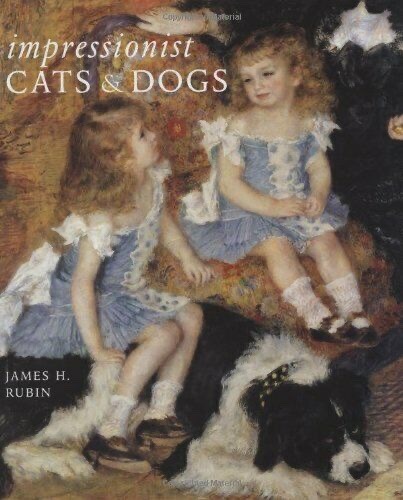
Impressionist Cats and Dogs: Pets in the Painting of Modern Life
46 notes
·
View notes
Text
#NarwhalDay :

Veronica Manilak (Inuit, Rankin Inlet, b.1935)
Embroidered Wall Hanging Depicting Sedna Atop A #Narwhal, n.d. (sold 2015)
15 X 13 In. (38.1 X 33 cm)
https://www.maynardsfineart.com/auction-lot/veronica-manilak-rankin-inlet-embroidered-wall_63240BF959
(Sedna is the Inuit goddess of the sea and its creatures.)
#animals in art#animal holiday#Narwhal Day#Nawhal#cetacean#whale#sea mammal#Arctic animals#Inuit art#Indigenous art#First Nations art#women artists#contemporary art#Veronica Manilak#textiles#embroidery#wall art#Sedna#mythology
42 notes
·
View notes
Text
Resharing for #NarwhalDay
#BookRecommendation for NarwhalDay :

Narwhal: Revealing an Arctic Legend (2017)
Bonus: I saw the 2019 NMNH exhibition the #narwhal book is based on, and found a few photos of the #Inuit artworks on display:
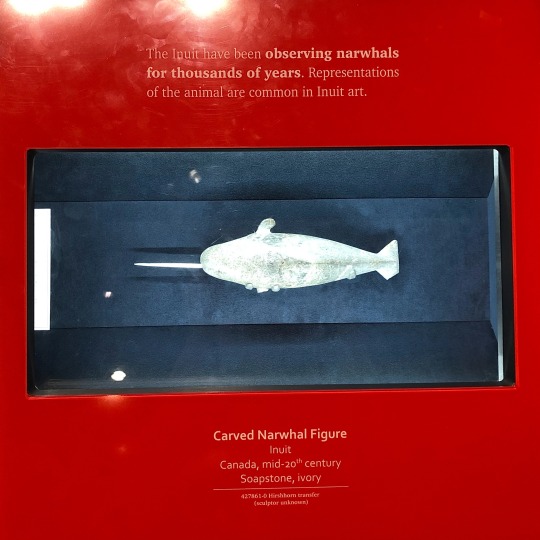
1. Carved Narwhal Figure
Canada, mid-20th c.
Soapstone, ivory

2. Narwhal Composition sculpture
Kakee Ningeeochiak
Cape Dorset, Canada, n.d.
Soapstone & caribou antler
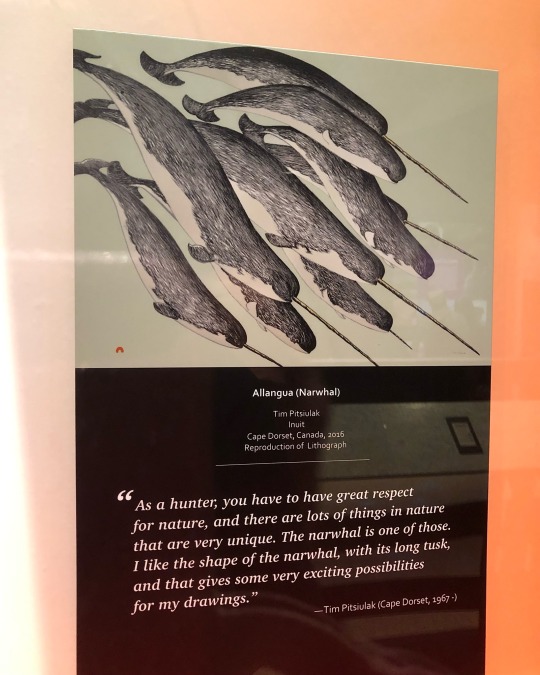
3. Allangua (Narwhal)
Tim Pitsiulak
Cape Dorset, Canada, 2016
Reproduction of Lithograph
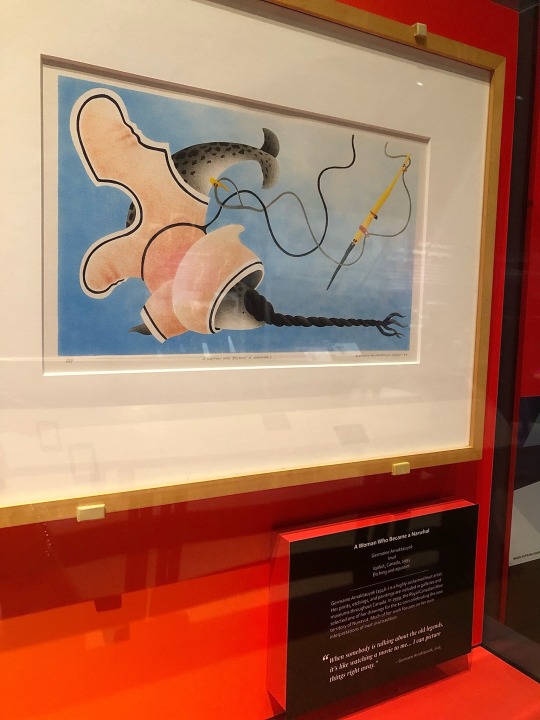
4. A Woman Who Became a Narwhal
Germaine Arnaktauyok
Iqaluit, Canada, 1993
Etching & aquatint
23 notes
·
View notes
Text
Resharing for #NarwhalDay
Happy #NarwhalDay!
A Narwhal (Monodon monoceros) tusk is the upper left canine tooth that grows through the lip. Sometimes, the right one does the same, resulting in a 2-tusked individual, as illustrated by English naturalist George Shaw (1751 – 1813):
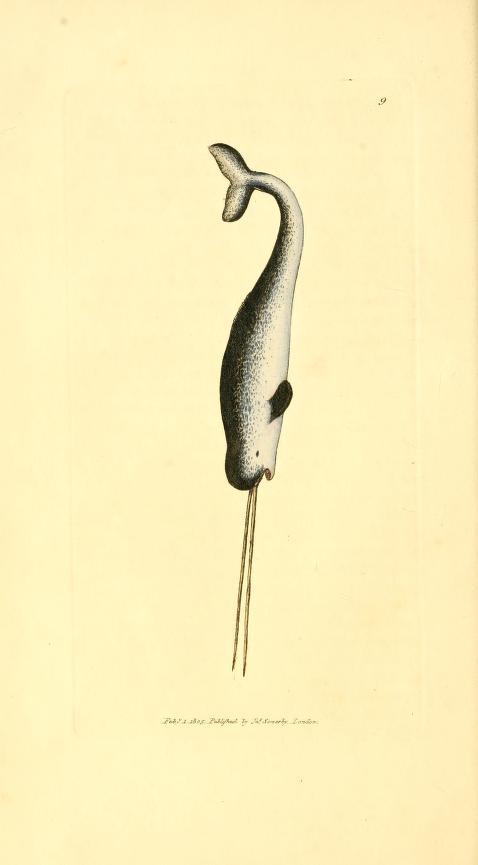
George Shaw's The British Miscellany (1806)
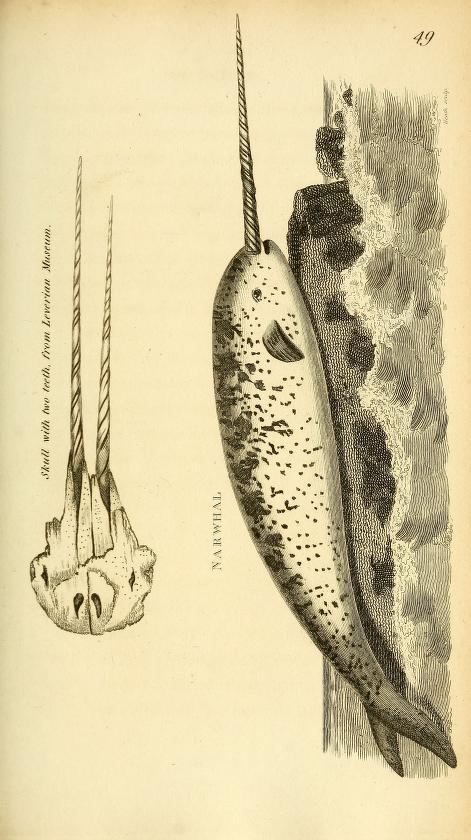
George Shaw's Zoological Lectures (1809)
Bonus: Found a photo I took of a real double-tusked #narwhal skull that was on display at the Smithsonian NMNH :

31 notes
·
View notes
Text
For #FrogFriday, one of the coolest #Nazca ceramics I’ve ever seen (and I’ve seen a lot LOL)…so many funky froggos! 🐸🐸🐸


“Double spout bottle with painted #frogs. Late Nasca. Stylization and vessel form reflect the period.”
[Nazca culture, Peru, c.1-750CE; Late Nazca, Phases 6-7, c.500-750CE)
On display at AMNH 41.1/9012
#animals in art#museum visit#ancient art#Nazca art#pottery#ceramics#bottle#polychrome#frog#frogs#Frog Friday#Andean art#Peruvian art#South American art#Indigenous art
43 notes
·
View notes
Text



Charles Willson Peale (1741-1827)
The Peale Family, 1773-1809
Oil on canvas
On display at The New York Historical “Pets in the City” show [1867.298]
“n the foreground of Charles Willson Peale's family portrait is their beloved pet dog Argus, which the artist added around 1808, replacing an inscription alluding to family unity. Probably using a study from life, Peale depicted Argus in profile as a celebration of loyalty on which the family is founded.
The family may have had at least two dogs named Argus. In his journal of 1778, Peale relates that a canine, later named Argus, followed him from Wilmington, Delaware, to Philadelphia. Perhaps another Argus, known as the ‘museum dog,’ kept watch at Peale's Museum in Baltimore.
Argus's name references Odysseus's hound in Homer's Odyssey, the only one to recognize his returning master after a twenty-year absence, In Greek mythology Argos (the Greek form of the Latin Argus) was a many-eyed, all-seeing giant.”
#animals in art#19th century art#painting#museum visit#Charles Wilson Peale#American art#dog#dogs in art#pet portrait#oil painting#exhibiton#Pets in the City#New York Historical#family portrait#18th century art
14 notes
·
View notes
Text

Murray Kupferman (1897-2002)
The Pigeon Fancier, c. 1960s
Oil on canvas
On display at The New York Historical “Pets in the City” show [1980.57]
“Pigeons are among New York City's most iconic residents. Many people, especially lonely urbanites, are drawn to them and their hypnotic waddling and cooing.
Sometimes known as rock doves, they are largely harmless and gentle.
Because pigeons are social birds, they often hang out in groups called flocks or kits. Since they are monogamous and mate for life, they tend to stick to familiar friendship groups for safety.”
#animals in art#20th century art#birds in art#bird#museum visit#birds#painting#oil painting#american art#1960s#pigeon#pigeons#modern art#exhibiton#New York Historical#Murray Kupferman#rock dove#urban wildlife
31 notes
·
View notes
Text


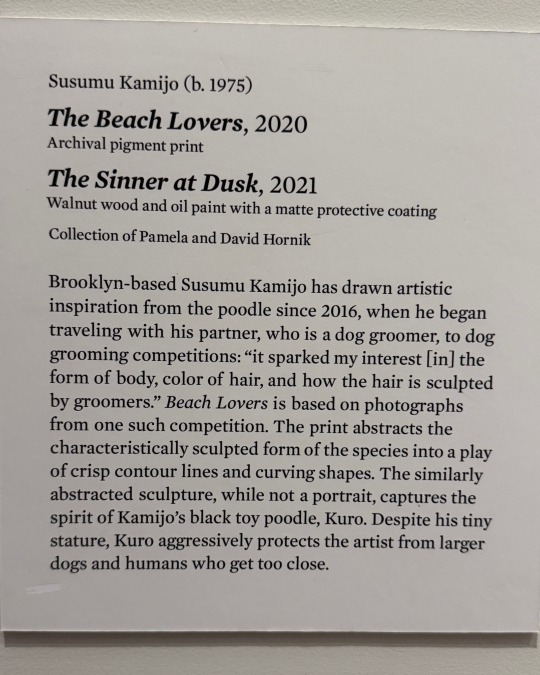
Susumu Kamijo (b. 1975)
1. The Beach Lovers, 2020
Archival pigment print
2. The Sinner at Dusk, 2021
Walnut wood & oil paint with matte protective coating
Both on display at The New York Historical “Pets In the City” show
“Brooklyn-based Susumu Kamijo has drawn artistic inspiration from the poodle since 2016, when he began traveling with his partner, who is a dog groomer, to dog grooming competitions: ‘it sparked my interest [in] the form of body, color of hair, and how the hair is sculpted by groomers.’ Beach Lovers is based on photographs from one such competition. The print abstracts the characteristically sculpted form of the species into a play of crisp contour lines and curving shapes. The similarly abstracted sculpture, while not a portrait, captures the spirit of Kamijo's black toy poodle, Kuro. Despite his tiny stature, Kuro aggressively protects the artist from larger dogs and humans who get too close.”
#animals in art#museum visit#print#sculpture#wood#Woodensday#poodle#dog#dogs#dogs in art#pet portrait#contemporary art#American art#pair#Susumu Kamijo#21st century art#Pets in the City#The New York Historical#exhibition
21 notes
·
View notes
Text
#TwoForTuesday :


1. “Bowl painted on interior with fish. Early Nasca.” 41.2/7763B
2. “Painted ceramic bowl with a curled fish on interior. Nasca style, Peru.” 41.2/7762b
[Nazca culture, Peru: c.1-750CE]
On display at AMNH NYC
#animals in art#museum visit#fish#ceramics#pottery#Nazca art#Peruvian art#Andean art#South American art#Indigenous art#AMNH#bowl#polychrome#ancient art#Two for Tuesday
174 notes
·
View notes
Text
#TwoForTuesday :


“Double-bodied ceramic whistling bottle. Chimu style, Peru. One half is modeled and painted in the form of a bat, the other half is a stylized spondylus shell.”
[Chimú culture: c.900-1470CE]
On display at @ AMNH NYC [41.2/7436]
#animals in art#museum visit#Chimu art#Andean art#South American art#Indigenous art#AMNH#bat#shell#Spondylus#Two for Tuesday#bottle#pottery#ceramics#whistling bottle#Peruvian art
25 notes
·
View notes
Text
More #TextileTuesday:

“Cotton textile painted with a flounder-like fish.
Chancay style, Peru.”
[Chancay culture: c.1000-1470CE]
On display at American Museum of Natural History
#animals in art#museum visit#AMNH#fish#flat fish#textile#cotton#Peruvian art#South American art#Andean art#Indigenous art#Textile Tuesday#Chancay art
134 notes
·
View notes
Text
#TextileTuesday:




“Border fragment of wool with a continuous band of #hummingbirds and fringelike appendages representing beans. Early Nasca [Nazca, Peru, c.1-450 CE]. Pollination of bean plants by birds may be suggested here. Border was formed using a needle-knit stemstitch.”
On display at American Museum of Natural History [41.2/6321]
#animals in art#birds in art#bird#birds#museum visit#AMNH#hummingbird#hummingbirds#Peruvian art#Andean art#Nazca art#Textile Tuesday#textile#wool#ancient art#pollination#Indigenous art#ethnobotany#erhnozoology#ethnobiology#TEK#traditional ecological knowledge#South American art
806 notes
·
View notes
Text
#MonochromeMonday :

Hans Thoma (Germany, 1839-1924)
Drawing for the primer: Hedgehog, c.1905
Pen & black ink over pencil on laid paper, laid down on cardboard
103 x 101 mm
Städel Museum, Frankfurt am Main [SG 2040]
#animals in art#20th century art#european art#German art#Hans Thoma#illustration#book art#Monochome Monday#black and white#monochrome#pen and ink#drawing#hedgehog#Städel Museum#1900s#ABC book
19 notes
·
View notes
Text
#MarsupialMonday :


Watercolor studies of “Phascolarctos or Native Bear” (Koala) by James Stuart, c.1831-41.
The State Library of New South Wales Mitchell Library
[Volume 04: Natural history drawings of marsupials, reptiles and rodents, ca. 1831-1841 / by James Stuart / Linnean Society of N.S.W. collection.]
#animals in art#19th century art#watercolor#natural history art#scientific illustration#koala#australian animals#marsupial#State Library of NSW#Marsupial Monday#drawing#threatened species
17 notes
·
View notes
Text
For #InternationalBeaverDay :
"The Original Beaver Map & Its Legacy"
via Swann Galleries
11 notes
·
View notes